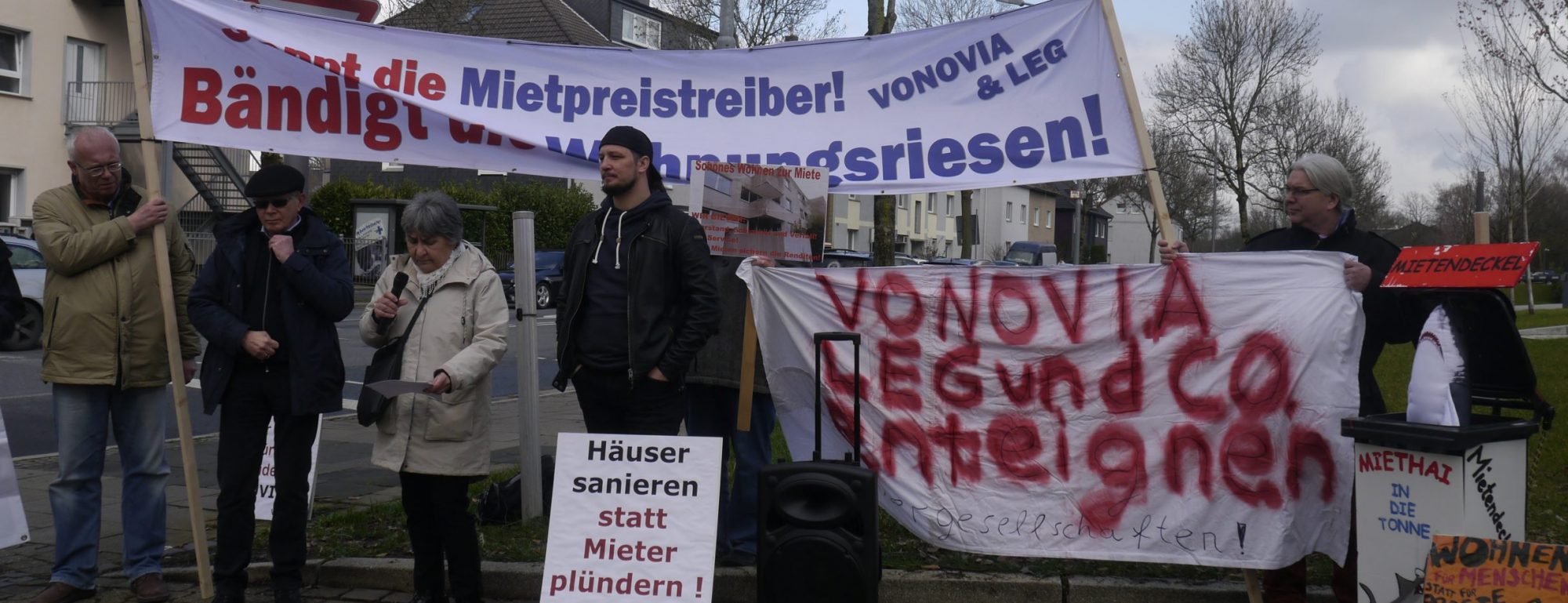EXPOSÉ
Knut Unger, January 2017
I.
In Germany (and elsewhere) the financialization of rental mass housing wasn’t a result of the 2007 ff. crisis, it was a part of its creation and of the longer post-fordistic crisis-process.
Rental housing is a form of lent capital. The rent (cash flow) together with the property rights builds material for larger financial operations which often have caused disastrous consequences for housing provision and economic stability. Since WW I, and especially during the decades of the post WW II-growth, industrialized societies developed regulations to hedge the risks and construct new needed housing for the work force. Neoliberalisation, which was a reaction to the global crisis of the Fordistic accumulation including its social housing regime, abolished these regulations and, since the 80ies, opened the path to a large scale financialisation of the – so far hedged – assets.
A main step of housing neoliberalisation in Germany was the abolishment of the regulation on non-for-profit housing in 1990. Sales started some years later as part of the replacement of the “Rhineland Capitalism” (in which the industries of the “real economy” were coordinated by the big German banks) through the capital market oriented “shareholder value capitalism”. After a couple of neoliberal political reforms mass sales of rental housing to Real Estate Private Equity (REPE) funds reached the maximum between 2004 and 2007.
Until 2008 more than a million former “social” rental housing units were sold to Private Equity Fonds, mainly managed by “Anglo-Saxon” based firms like Terra Firma (Guy Hands), Fortress, Cerberus, Morgan Stanley, Goldman Sachs, Babcock & Brown or Blackstone. The funds refinanced their buy-outs through huge CMBS-securitisations which directly indebted the aged housing stocks.
II.
The global financial crisis since 2007 interrupted the process of transactions. It also forced fund managers to reduce costs for maintenance. Under the governance of global financial indicators and under the auspices of rating agencies the managers speeded up the transformation of the traditional long term oriented housing management into a nervous permanent experiment of cost optimisation. Some of the largest housing platforms under REPE control started an “industrialization” of the housing business, based on the introduced systems of indicators, IT, standardized service works and the centralization of facilities.
Another problem was the management of the balloon risk of the CMBS securitisation and the resulting shortage of potential liquidity. With the German “crisis recovery” since about 2011 some key actors managed to restructure the CMBS in favour of a more diversified structures of loans and bonds. Doing so, they were also able to organize the exits of funds from their temporary investments and thus to realize their returns. They mostly did so by public offerings at German stock exchanges.
III.
Cheap money policies of the central banks and the globally asset seeking capital since then had the following main consequences in this segment:
(1) Comparably attractive investments into shares of the big German housing companies caused rising stock market prizes. (2) Possibilities for a permanent restructuring of the debt through bonds. (3) Fast process of acquisitions within the segment (“consolidation”) which lead to new giant landlords. (4) Investment into the maintenance, renovation and densification of the housing stocks, which increases the market values and rents. (5) Large scale “insourcing” of external services and labour. It increases the control over the whole value chain and, thus, scales up the conditions of (6) industrialized housing management. With IT-managed and highly standardized services and products the “financialized housing industry” seeks to fundamentally increase not only the financial rentability of the the capital, but also the productivity of the “real housing business”. (7) Further “extension” of the business into the production of building products (cross-border), care-services and “big data” through centralized “smart” technologies. (8) Growing influence on regional markets and housing policies. IV. The strategy to react to these developments is twofold:
(1) We need new forms of tenant organization which do not so much organize individuals, but the collectives of tenants of a specific firm which are affected by same or similar measurements. We currently are participating in two projects of such a “corporate tenants organisation”: The Vonovia and the LEG case. The German Federation of Tenants (DMB) also has started projects for a better coordination of related action.
(2) Forms of collective organisation will not show lasting successes and will remain exceptional as long as the rental law is totally focused on individual contracts and does not provide specific rules for the management of huge housing stocks. This means: The appearance of a new type of huge landlord requires the development of additional laws and regulations.
The centre of this regulation would be a law which sets up some standards for the commercial management of larger housing stocks. Other demands more generally relate to collective rights of non-property owners regarding the territory, a general improvement of rental housing regulations and taxations / regulations of property transactions.
